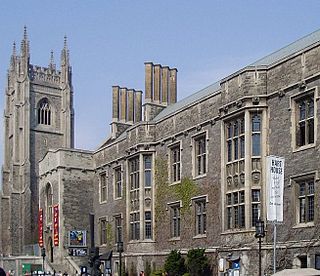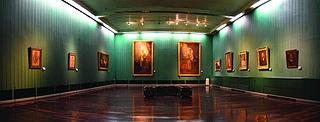
Indian architecture is rooted in the history, culture, and religion of India. Among several architectural styles and traditions, the best-known include the many varieties of Hindu temple architecture and Indo-Islamic architecture, especially Rajput architecture, Mughal architecture, South Indian architecture, and Indo-Saracenic architecture. Early Indian architecture was made from wood, which did not survive due to rotting and instability in the structures. Instead, the earliest existing architecture are made with Indian rock-cut architecture, including many Buddhist, Hindu, and Jain temples.

Modern architecture, also called modernist architecture, was an architectural movement and style that was prominent in the 20th century, between the earlier Art Deco and later postmodern movements. Modern architecture was based upon new and innovative technologies of construction ; the principle functionalism ; an embrace of minimalism; and a rejection of ornament.

Japanese architecture has been typified by wooden structures, elevated slightly off the ground, with tiled or thatched roofs. Sliding doors (fusuma) and other traditional partitions were used in place of walls, allowing the internal configuration of a space to be customized for different occasions. People usually sat on cushions or otherwise on the floor, traditionally; chairs and high tables were not widely used until the 20th century. Since the 19th century, however, Japan has incorporated much of Western, modern, and post-modern architecture into construction and design, and is today a leader in cutting-edge architectural design and technology.

Malay houses refer to the vernacular dwellings of the Malays, an ethno-linguistic group inhabiting Sumatra, coastal Borneo and the Malay Peninsula.

The architecture of Singapore displays a range of influences and styles from different places and periods. These range from the eclectic styles and hybrid forms of the colonial period to the tendency of more contemporary architecture to incorporate trends from around the world. In both aesthetic and technological terms, Singapore architecture may be divided into the more traditional pre-World War II colonial period, and the largely modern post-war and post-colonial period.

Nepali architecture or Nepalese architecture is a unique blend of artistic and practical considerations. Situated between the trade routes of India, Tibet and China, Nepali architecture reflects influences from these cultural strongholds. The pagoda architectural tradition figures prominently among Hindu temples in the country. In contrast, Buddhist temples reflect the Tibetan tradition of Buddhist architecture and the stupa features prominently. Mugal, summit and dome styles also have great scope in Nepal. Whilst significant influence for Nepal's architecture comes from India, there is also a distinct influence from the Newar people.

The history of Cambodian art stretches back centuries to ancient times, but the most famous period is undoubtedly the Khmer art of the Khmer Empire (802–1431), especially in the area around Angkor and the 12th-century temple-complex of Angkor Wat, initially Hindu and subsequently Buddhist. After the collapse of the empire, these and other sites were abandoned and overgrown, allowing much of the era's stone carving and architecture to survive to the present day. Traditional Cambodian arts and crafts include textiles, non-textile weaving, silversmithing, stone carving, lacquerware, ceramics, wat murals, and kite-making.

Thai temple art and architecture is the art and architecture of Buddhist temples in Thailand. Temples are known as wats, from the Pāḷi vāṭa, meaning "enclosure". A temple has an enclosing wall that divides it from the secular world. Temples served as a stabilizing center in these communities because their sacred teachings became a basis of authority and boundaries, their precincts became places of instruction, their regimes of common ownership of property formed them into economic centers, and their functions allowed them to serve at the heart of these communities in a variety of ways.

The architecture of Indonesia reflects the diversity of cultural, historical, and geographic influences that have shaped Indonesia as a whole. Invaders, colonizers, missionaries, merchants, and traders brought cultural changes that had a profound effect on building styles and techniques.

Gothic Revival architecture in Canada is an historically influential style, with many prominent examples. The Gothic Revival style was imported to Canada from Britain and the United States in the early 19th century, and it rose to become the most popular style for major projects throughout the late 19th and early 20th centuries.

The architecture of Thailand is a major part of the country's cultural legacy and reflects both the challenges of living in Thailand's sometimes extreme climate as well as, historically, the importance of architecture to the Thai people's sense of community and religious beliefs. Influenced by the architectural traditions of many of Thailand's neighbors, it has also developed significant regional variation within its vernacular and religious buildings. Although Siam urged to identify themselves as a modernized state, Western culture and influence was undesirable and inevitable. In an attempt to become distinguished, Thailand's ruling elite gravitated toward selective Modernization to avoid the undesired Western influence.
Architecture in Malaysia traditionally consist of malay vernacular architecture. Though modern contemporary architecture is prevalent in urban areas there are style influences from Islamic, colonial architecture, chinese straits etc. New materials, such as glasses and nails, were brought in by Europeans, changing the architecture.

The National Gallery is an art gallery and one of Thailand's national museums. It is located on Chao Fa Road in Bangkok's historic Phra Nakhon District, and is housed in the building of the former Royal Thai Mint. The gallery's collections range from traditional Thai art to the Western-influenced portraiture of the 19th century and modern and contemporary works.

The architecture of Ottawa is most marked by the city's role as the national capital of Canada. This gives the city a number of monumental structures designed to represent the federal government and the nation. It also means that as a city dominated by government bureaucrats, much of its architecture tends to be formalistic and functional. However, the city is also marked by Romantic and Picturesque styles of architecture such as the Parliament Building's Gothic Revival architecture.

Seoul City Hall is a governmental building for the Seoul Metropolitan Government in South Korea, in charge of the administrative affairs of Seoul. It is located in Taepyeongno, Jung-gu, at the heart of Seoul. It is connected to City Hall Station (Seoul) on Seoul Subway Line 1, with access to Seoul Subway Line 2 from the same station. In front of the current city hall is the old city hall building, now Seoul Metropolitan Library, and Seoul Plaza.
After the Fall of Constantinople to the Ottomans and the following trends of Greek migration to the Diaspora, Greek architecture was concentrated mainly on the Greek Orthodox churches of the Diaspora. These churches, such as other intellectual centres built by Greeks, were used also as a meeting-place. The architectural style of these buildings was heavily influenced by the western European architecture.

Stripped Classicism is primarily a 20th-century classicist architectural style stripped of most or all ornamentation, frequently employed by governments while designing official buildings. It was adopted by both totalitarian and democratic regimes. The style embraces a "simplified but recognizable" classicism in its overall massing and scale while eliminating traditional decorative detailing. The orders of architecture are only hinted at or are indirectly implicated in the form and structure.

The Chulalongkorn University Auditorium is one of the main historic buildings of Chulalongkorn University in Bangkok, Thailand. It was built during 1937–1938 and was designed by Phra Phromphichit and Phra Sarotrattananimman. The building represents one of the most major examples in the development of the applied Thai style of architecture during the People's Party government; the modernist reinforced concrete structure is combined with a traditional-Thai/Khmer–influenced layered roof and decorative elements. The building is an unregistered ancient monument, and received the ASA Architectural Conservation Award in 2002.
Chuea Patthamachinda, better known by the noble title Luang Wisansinlapakam (หลวงวิศาลศิลปกรรม), was a Thai traditional artisan and architect. He worked under various government departments, including the Poh Chang School of Arts and Crafts, where he taught for 17 years. Later in life, he also taught at Silpakorn University, where he was named adjunct professor. He is known for various forms of the traditional visual arts, as well as architecture. He designed numerous Buddhist temples, and is credited with an eclectic output of modern and applied Thai architecture, mostly stemming from various collaborations with Edward Healey and Phra Sarotrattananimman.

The National Theatre is a performing arts venue in Bangkok's Phra Nakhon District. It opened in 1965, and operates as a government agency under the Office of Performing Arts of the Fine Arts Department. Today, it is best known for traditional performances, especially of the khon masked dance.

















